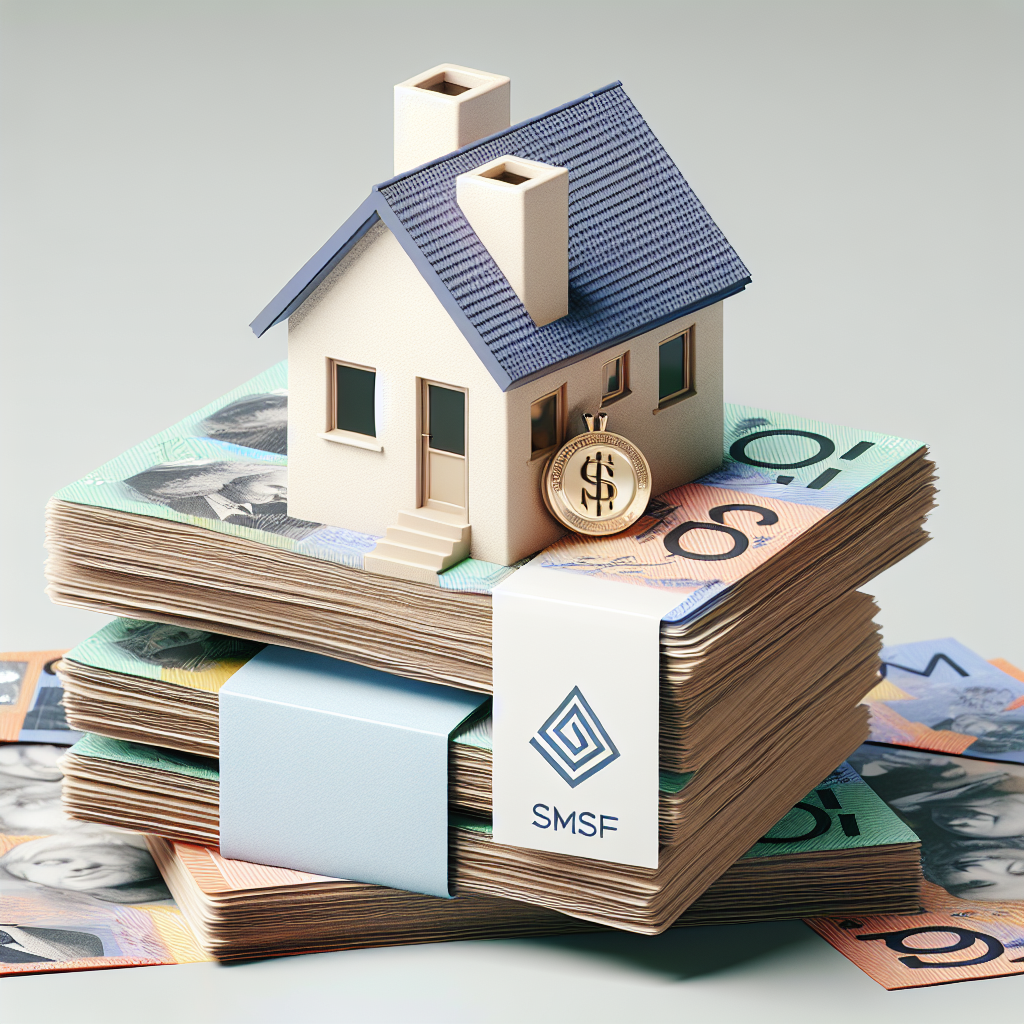Are you considering the powerful strategy of buying a property with super? If so, you’re about to embark on one of the most significant financial journeys available to Australian investors. Self-Managed Super Funds (SMSFs) offer a unique pathway to property ownership that combines retirement planning with real estate investment potential.
Self-Managed Super Funds (SMSFs) provide a unique opportunity to take control of your retirement investments while potentially benefiting from significant tax advantages.
An SMSF essentially puts you in the driver’s seat of your superannuation, allowing greater control over investment decisions and opening doors to opportunities not typically available in traditional super funds. With approximately 25% of all SMSF assets invested in property, this strategy has proven popular among Australians seeking to diversify their retirement portfolios.
Step 1: Establish Your SMSF Foundation
Before you can start exploring property markets, you need to create your SMSF structure. This isn’t as intimidating as it might sound, but it does require careful attention to detail.
First, you’ll need to establish a trust deed – the legal document that outlines how your fund will operate. This document sets out the rules for your fund and defines the rights and responsibilities of all parties involved. Working with a specialized SMSF legal professional is crucial at this stage to ensure your deed complies with all current regulations.
Next comes registration with the Australian Taxation Office (ATO). Your SMSF must obtain its own Tax File Number (TFN) and Australian Business Number (ABN). You’ll also need to register for GST if your SMSF’s annual turnover exceeds $75,000.
“Setting up the right foundation for your SMSF is critical to ensuring smooth sailing when buying a property with super,” explains John Smith, SMSF specialist. “Many first-time investors focus too much on the property and not enough on getting their fund structure correct from day one.”
Opening a dedicated bank account for your SMSF is your next move. This account will handle all fund transactions, including receiving contributions and investment income, as well as paying for expenses. Remember, keeping SMSF finances completely separate from personal finances isn’t just good practice – it’s mandatory.
Step 2: Develop a Clear Investment Strategy
A comprehensive investment strategy isn’t just a good idea – it’s a legal requirement for all SMSFs. When buying a property with super, your strategy must clearly document how property investment aligns with your retirement goals.
📝 Pro Tip:
Your investment strategy document isn’t just a compliance requirement—it’s your roadmap to retirement success. Take time to develop it thoughtfully with professional guidance.
Your investment strategy should address:
- Risk and return objectives
- Diversification across different asset classes
- Liquidity needs of the fund
- Insurance requirements for members
- How property specifically fits into your retirement plans
The ATO places significant emphasis on the “sole purpose test” – the fundamental principle that your SMSF must be maintained solely to provide retirement benefits to members. Any investment decision, including property purchases, must serve this primary objective. See the ATO’s investment restrictions for more information.
Recent data shows that SMSFs with clearly documented investment strategies that specifically address property investment are 35% less likely to face compliance issues during ATO audits. This isn’t just about avoiding penalties – it’s about creating a roadmap for your financial future.
Step 3: Research and Select the Right Property
🏠 Property Selection Criteria 🏠
When buying a property with super, not all real estate is created equal. Your selection must align with both your investment strategy and SMSF regulations.
The first decision is typically between residential and commercial properties. Each has distinct advantages:
Residential Properties:
- Generally more affordable entry point
- Often more liquid (easier to sell)
- Familiar territory for most investors
- Lower maintenance requirements
Commercial Properties:
- Potentially higher rental yields (often 5-8% compared to 2-4% for residential)
- Longer lease terms providing income stability
- Tenants typically responsible for outgoings
- Possibility of leasing to your business (with strict conditions)
Location research becomes critical at this stage. Property values in Sydney and Melbourne have shown average annual growth of 6.8% over the past decade, while some regional areas have recently outperformed capital cities with up to 12% growth during 2020-2021.
“The property you select for your SMSF should align with your long-term retirement goals, not just current market trends,” advises property investment specialist Jane Brown. “Consider factors like infrastructure development, demographic shifts, and employment growth in potential areas.”
Remember, buying a property with super means you can’t live in it or rent it to fund members or their relatives. The property must be maintained at arm’s length from all related parties.
Step 4: Understand the Financial Requirements
Property investment through an SMSF involves various costs that must be factored into your planning:
Initial Purchase Costs:
- Stamp duty (varies by state, typically 4-5% of purchase price)
- Legal fees ($1,500-$3,000)
- Loan establishment fees (if borrowing)
- Building and pest inspections ($400-$800)
Ongoing Expenses:
- SMSF administration fees ($1,000-$3,000 annually)
- Property management fees (typically 5-8% of rental income)
- Insurance premiums
- Maintenance and repairs
- Council rates and strata fees (if applicable)
Most financial experts recommend a minimum SMSF balance of $200,000-$300,000 before considering property investment. This threshold isn’t arbitrary—it’s based on ensuring sufficient diversification and covering the costs associated with buying a property with super.
Cash flow planning is essential, as your fund must maintain enough liquidity to meet ongoing expenses and member benefit payments. A property that consumes too much of your fund’s assets could create compliance issues down the track.
Step 5: Explore Financing Options
When buying a property with super, you have two main financing approaches:
Cash Purchase:
If your SMSF has sufficient funds, you can purchase a property outright. This simplifies the process considerably and eliminates borrowing costs and restrictions.
Limited Recourse Borrowing Arrangement (LRBA):
An LRBA allows your SMSF to borrow money specifically for property investment. This arrangement has strict requirements:
- The borrowed funds must be used to purchase a single acquirable asset
- The lender’s recourse in case of default is limited to that specific asset
- The asset is held in a separate holding trust until the loan is repaid
LRBA interest rates typically sit 0.5-1% higher than standard mortgage rates, reflecting the specialized nature of these loans. Current SMSF loan rates range from approximately 5.5% to 7% depending on the lender and loan structure.
“LRBAs can be powerful tools for SMSF investors, but they come with complexity,” notes financial advisor David Williams. “Working with lenders who specialize in SMSF lending is crucial, as mainstream banks have largely withdrawn from this space in recent years.”
The loan-to-value ratio (LVR) for SMSF loans is typically capped at 70-80%, meaning your fund needs a substantial deposit when buying a property with super through borrowing.
Step 6: Navigate Compliance and Regulations
The ATO closely scrutinizes SMSF property investments, making compliance a top priority. Key regulations include:
- All transactions must be conducted at arm’s length and on commercial terms
- No more than 5% of the total SMSF asset value can be invested in related parties
- The property cannot be used by fund members, their relatives, or related parties
- All decisions must satisfy the sole purpose test
- Properties acquired through LRBAs cannot be substantially improved (only repairs and maintenance are permitted)
Penalties for non-compliance can be severe, including:
- Administrative penalties of up to $13,200 per trustee
- The fund being declared non-complying, resulting in tax on 45% of fund assets
- Trustees being disqualified from managing super funds
Recent ATO statistics show that property-related compliance issues account for approximately 32% of all SMSF regulatory breaches. Staying informed and working with experienced professionals can help you avoid becoming part of this statistic.
Step 7: Implement Effective Property Management
Once you’ve succeeded in buying a property with super, proper management becomes essential. Most SMSF trustees opt to engage professional property managers rather than self-managing, for several reasons:
- Ensures arm’s length management (reducing compliance risks)
- Professional tenant selection and management
- Efficient handling of maintenance issues
- Regular market reviews of rental rates
- Comprehensive reporting for SMSF records
The property manager’s fees (typically 5-8% of rental income) are paid from the SMSF’s bank account, not your personal funds. All expenses and income related to the property must flow through the SMSF’s accounts.
Regular maintenance is not just about preserving the property’s value – it’s a compliance requirement. Your SMSF must demonstrate that it’s maintaining the property to commercial standards, with all work properly documented and paid for from fund assets.
Understanding Tax Implications
💰 SMSF Tax Benefits At-A-Glance 💰
The tax treatment of SMSF property investments offers significant advantages compared to personally held property:
- Rental income is taxed at just 15% within an SMSF (compared to your marginal tax rate personally)
- Capital gains receive a one-third discount if the property is held for at least 12 months, effectively reducing the tax rate to 10%
- Once your SMSF enters pension phase, both rental income and capital gains may be completely tax-free
Recent analysis by the Financial Review shows that investors in the highest tax bracket could save up to $15,000 annually on rental income tax alone by holding an investment property within an SMSF rather than personally.
Depreciation benefits are another tax advantage when buying a property with super. New properties allow you to claim depreciation on both the building structure and fixtures/fittings, potentially reducing your fund’s taxable income by thousands each year.
Ongoing Monitoring and Review
Your SMSF property investment journey doesn’t end at purchase. Regular review of your investment’s performance against your strategy is essential.
Factors to monitor include:
- Rental yield compared to market averages
- Capital growth trends in the area
- Changes to property regulations or tax treatments
- Shifts in your retirement timeline or objectives
- Cash flow adequacy for fund obligations
Most successful SMSF investors conduct formal reviews at least annually, with adjustments to strategy as needed. This may involve refinancing, renovating (within strict SMSF guidelines), or eventually selling the property as retirement approaches.
Partnering with Experts on Your Journey
Buying a property with super represents a sophisticated investment strategy that benefits from professional guidance. At Aries Financial Pty Ltd, we specialize in helping SMSF trustees navigate the complexities of property investment with integrity and expertise.
Our deep understanding of SMSF lending requirements and property investment fundamentals positions us as Australia’s Trusted SMSF Lending Specialist. We believe in empowering investors through education and tailored financing solutions that align with both compliance requirements and long-term retirement goals.
The journey of buying a property with super can be complex, but with the right foundation of knowledge and support, it offers a powerful pathway to building wealth for retirement. By following these seven crucial steps and working with experienced professionals, you can join the thousands of Australians who have successfully leveraged their superannuation to create property-based retirement security.


